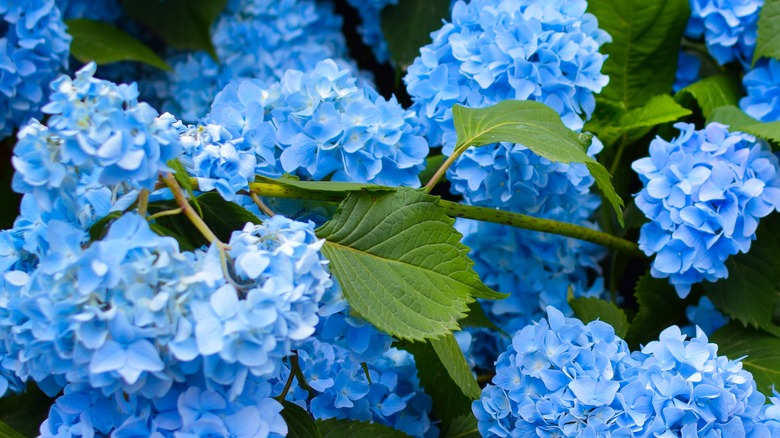Garden
Peg Aloi
Hydrangeas are one of the most familiar and beloved flowering shrubs. There are a few different types of hydrangeas, and all of them have slightly different care needs and ideal growing conditions. Most hydrangeas are easy to grow (like the recent series of Endless Summer hydrangeas). But occasionally, a hydrangea may fail to produce flowers. There are various reasons for this problem and a number of solutions. You may have heard advice along the lines of “Just add more fertilizer,” but the problem is often slightly more complex than that. The first consideration is understanding the qualities of the type of hydrangea you have.
Martha Stewart describes the different types of hydrangeas available for home gardens, including bigleaf (Hydrangea macrophylla) and panicle (Hydrangea paniculata), two of the most common. Depending on a variety of factors (such as where you have them planted, sun exposure, the type of soil you have, your growing zone or weather conditions, timing of pruning, and/or the fertilizers you may use), your hydrangeas may experience occasional issues with flowering. There are some important things to remember about hydrangea care for each of these varieties to ensure they bloom consistently.
Why cold hardiness matters for bigleaf hydrangeas

Alya_Ro/Shutterstock
The bigleaf hydrangea produces large leaves and flowers in shades of blue or pink (these colors can be affected by the soil pH). The flowers are either mophead (large round clumps of small flowers) or lacecap (large blooms alongside smaller ones). This hydrangea type is the one most commonly associated with failure to bloom, and usually, the reason is simple: cold weather. If temperatures are too cold, buds may not form, and if there’s a late spring frost, young buds may die. It’s important to accommodate your bigleaf hydrangea’s hardiness zone preferences.
For example, the famous ‘Nikko Blue’ is often described as being hardy to Zone 5, but it really does best in Zone 6 and above, particularly if it’s exposed to winter winds. Planting it near a sheltered spot that gets some winter warmth (such as next to a brick wall facing east) may help it survive the winter better. If you live in Zone 5 or above and occasionally have harsh winters or slow springs, choose bigleaf hydrangeas well-suited to the cold, ideally that are cold hardy to Zone 4. This includes the lovely ‘Mini Mauvette’ (which has small soft pink flowers and a long season of bloom) or the Endless Summer ‘Bloomstruck’ (a reblooming hydrangea with a rich range of colors). Pruning is a factor, too. The Old Farmers Almanac recommends pruning bigleaf hydrangeas in late summer after they’ve stopped flowering.
Soil and fertilizer are also key to hydrangea health
Mariola Anna S/Shutterstock
Soil is key to all successful garden plants, and hydrangeas are no exception. Soil pH can affect the color of bigleaf hydrangeas; making the soil more acidic can shift pink flowers to blue tones over time. Panicle hydrangeas produce large clumps of creamy white flowers that turn rosy pink in late summer, later darkening to maroon in autumn. Some varieties (such as the popular ‘Limelight’) have white flowers with a pale green tone. Panicle hydrangeas are usually reliable bloomers as long as they receive a good balance of sun vs. shade (most hydrangeas like a partial-sun environment).
Panicle and oakleaf hydrangeas like a rich, loamy, moist, slightly acidic soil. These long-lived shrubs also benefit from an occasional nutrient boost from soil amendments. A top dressing of organic compost or manure in the fall works well, and an application of lightweight mulch (such as pine bark or pine straw) protects the roots in winter.
You can apply fertilizer in spring once buds have formed. But it’s important to choose the right fertilizer; otherwise, you may simply get big healthy leaves but no flowers. The University of Massachusetts at Amherst offers these guidelines for bigleaf hydrangeas: fertilize once in spring with a fertilizer designed for plants that prefer acidic soil, preferably a 12-4-8 formulation that is low in phosphorous. For other hydrangea types, a general-purpose fertilizer is sufficient.